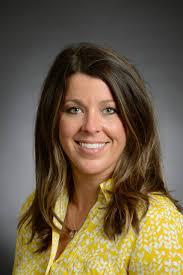
Alumna Lindsay Mays Works with Children with Autism

In recognition of Autism Awareness Month, we honor the work of Palo Alto University (PAU) alumna Lindsay Mays, PhD. Mays is a child psychologist in the Neurodevelopmental and Behavioral Psychology division of Cincinnati Children’s Hospital Medical Center providing diagnostic evaluations for children with suspected autism spectrum disorders (ASD) and working with families to determine treatment plans.
“I love my job. It's so rewarding to work with these kids and their families,” says Mays. “The more experience I have with them, the more understanding and empathetic I become.”
The demand for Mays’ skills is increasing. Last week, the Centers for Disease Control and Prevention (CDC) published a 2020 study showing a nationwide ASD prevalence of 27.6 per 1,000 children aged 8 years old, which breaks down to 1 in 36. These findings are higher than the previous 2018 estimate that found a prevalence of 1 in 44. But rather than focus on the data, Mays emphasizes the importance of awareness, acceptance, and appreciation of those with ASD.
“Different is not bad, different is just different. When a brain is working a little bit differently it doesn’t mean it’s wrong,” says Mays. “Appreciating diversity in that respect is something I think should be highlighted. We have a lot to learn from each other. And appreciating people’s differences is a really powerful way of learning.”
Mays graduated from PAU’s PhD in Clinical Psychology program in 2014. She completed her practicum at the UC San Francisco Center for Autism Spectrum Disorders and Neurodevelopmental Disorders. After graduation, she returned to her home state of Ohio to complete her fellowship at Cincinnati Children’s Hospital Medical Center working with children with neurodevelopmental disabilities. After completing her fellowship, Mays was hired in her current role.
Typical Day as an Autism Spectrum Disorders Child Psychologist
Mays, a clinical psychologist, works with an interdisciplinary team of providers, such as developmental pediatricians, psychiatrists, occupational therapy practitioners, speech therapists, special education specialists, and social workers. In the morning, the team meets multiple children, mostly under the age of 5, for evaluation. In the afternoons, the team gathers to discuss possible diagnoses and how best to support the child. “Every child that walks in the door has concerns for some kind of developmental disability, but it’s not necessarily ASD,” says Mays. “The child could simply have speech and language delays, behavior problems, mood concerns, learning issues, or developmental delays in cognitive and problem-solving skills. We see a wide range of kids and our great team offers the specific support they need.” With the team, Mays determines the diagnosis, assesses which services the child needs, and makes those recommendations in the form of a treatment plan. Since every child is unique, Mays spends a lot of time with the family to gain information about the child’s behavior in various settings, such as behavior seen at home and at school, to get a holistic picture. After Mays creates the first draft of the treatment plan, she makes adjustments according to the family's needs and abilities. “Every child is different, and every family is different. We want to go with a treatment plan that the family will adhere to,” says Mays. “Families have different priorities, resources, and abilities. We provide all the resources and options that we can, but we need to keep in mind what is feasible for the family while still addressing the needs of the child.”What are the Symptoms of Autism?
There are two main categories of symptoms Mays and her team look for when making an ASD diagnosis:- Delays in social and communication skills. This includes delays in both spoken language and body language, such as lack of eye contact, and/or specific facial expressions and gestures. Also, delays in social skills, such as how the child plays independently and with others.
- Repetitive behaviors or body movements, repetitive speech, rigid behavior, and/or having a hard time with transitions.
